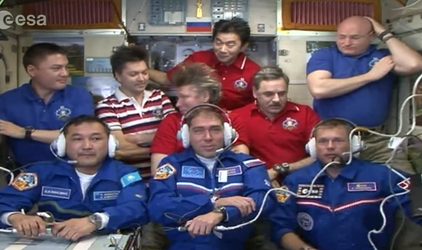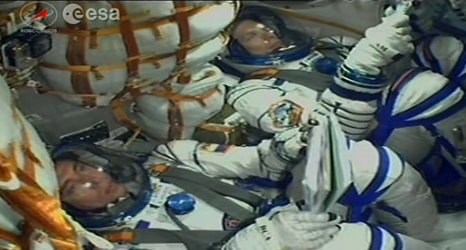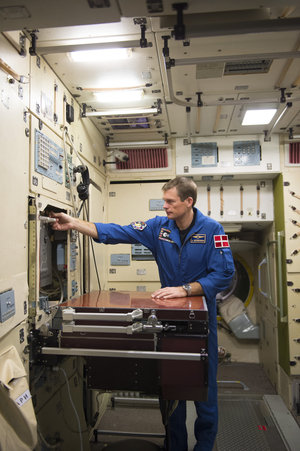New ways of doing: improving operations
ESA astronaut Andreas Mogensen tested new ways of following complex procedures on the International Space Station, freeing up his hands and time to get more work done.
Astronauts on the Station have many tasks, ranging from scientific experiments to maintaining ventilation systems and grappling visiting spacecraft with robotic arms.
Remembering the details of how to perform all these operations would be impossible – and it’s not necessary. Instead, crew procedures are available for every job and many complicated tasks are performed step by step, just like following an instruction manual. This is simple and secure, but there is room for improvement.

The procedures are generally displayed on a laptop or tablet, so astronauts need to have at least one hand free to move to the next step. A lot of time is lost referring to procedures and returning to the task at hand.
For the MobiPV experiment, ESA is testing a more efficient way, with voice-controlled glasses that relay information directly to Andreas’s eyes. In addition, a camera will beam video images to ground control using a new high-speed connection, so that mission controllers can see what Andreas sees and offer advice when necessary.
To test the system Andreas conducted some maintenance tasks for which he has not received training on Earth.
If the system is a success it will free up astronaut time to concentrate on vital training while allowing mission controllers more freedom to assign tasks as needed to astronauts.

The 3DVit experiment provides virtual reality training and augmented reality for tasks that Andreas can study and follow in space before starting an operation. Andreas perormed a maintenance cleaning task using 3DVit on Columbus.
Earlier versions of the system without augmented reality already proved their worth as refresher courses on docking Europe’s space freighter, the Automated Transfer Vehicle, ATV. You can download and try excerpts from the actual ATV training here.
Another experiment tested whether a Bluetooth network is sufficient for transmitting information on the International Space Station. Andreas wore a heart-rate sensor for the Mobile HR experiment during exercise that transmited information over a Bluetooth network wirelessly.















 Germany
Germany
 Austria
Austria
 Belgium
Belgium
 Denmark
Denmark
 Spain
Spain
 Estonia
Estonia
 Finland
Finland
 France
France
 Greece
Greece
 Hungary
Hungary
 Ireland
Ireland
 Italy
Italy
 Luxembourg
Luxembourg
 Norway
Norway
 The Netherlands
The Netherlands
 Poland
Poland
 Portugal
Portugal
 Czechia
Czechia
 Romania
Romania
 United Kingdom
United Kingdom
 Slovenia
Slovenia
 Sweden
Sweden
 Switzerland
Switzerland















































